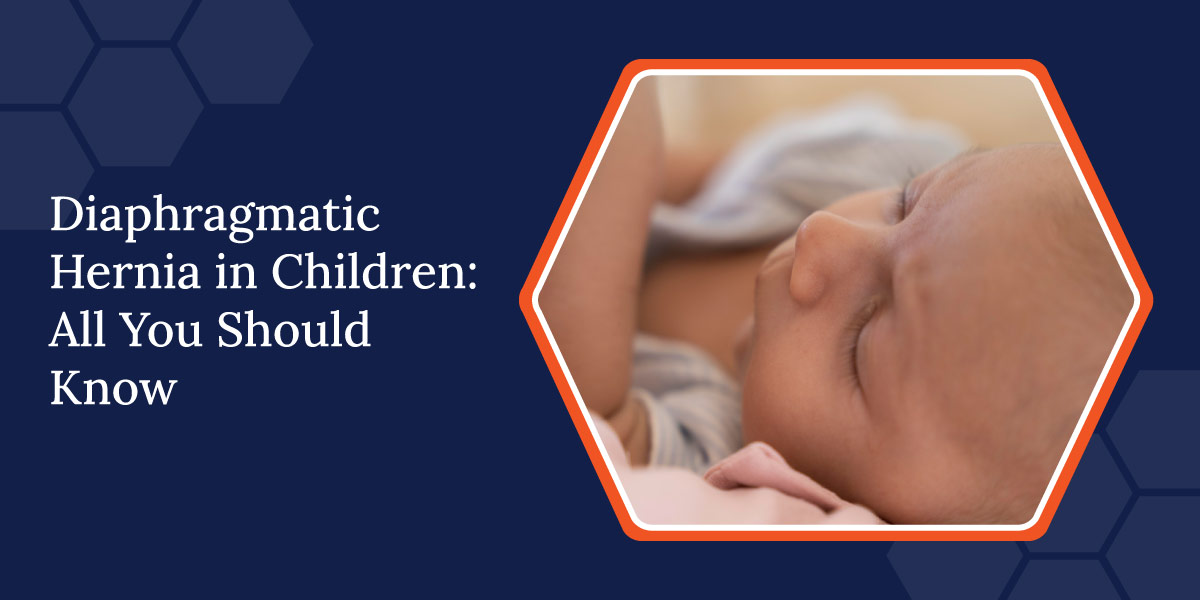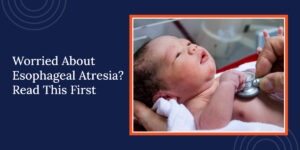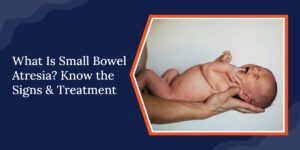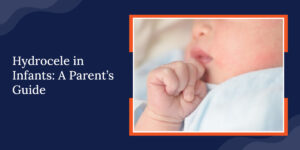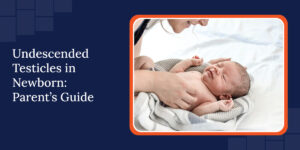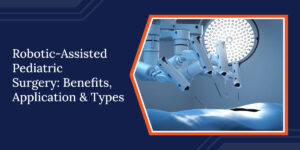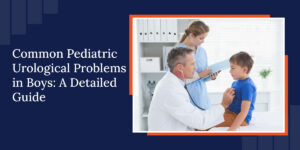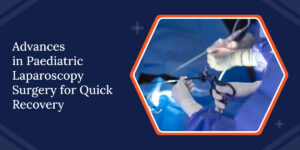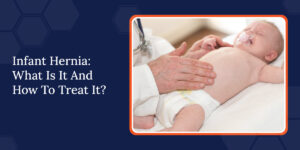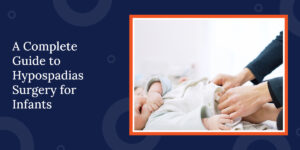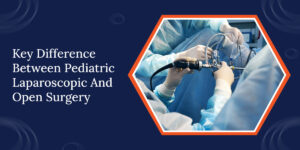Hearing that your baby has a diaphragmatic hernia can stop you in your tracks. It’s not just a medical term; it’s a condition that affects how your child’s lungs grow and how they breathe after birth. At its core, it means there’s a hole in the diaphragm, the muscle that helps with breathing. That hole lets organs from the abdomen move into the chest, crowding the space where the lungs should be.
This is a serious condition, and early diagnosis matters. The sooner it’s found, the sooner your care team can step in to support your baby.
This guide is here to help you understand what a diaphragmatic hernia means, what causes it, what signs to look for, how it’s diagnosed, what treatment involves, and what life may look like afterward. You’ll also find guidance on getting the right support for your child and for yourself.
A] What Is a Diaphragmatic Hernia?
A diaphragmatic hernia is a birth defect. It happens when a gap forms in the diaphragm, allowing organs like the stomach, intestines, or liver to push into the chest area. When that happens, the lungs don’t have the space they need to grow properly. Diaphragmatic hernia in children can present differently depending on age and severity, and understanding the specifics of the condition is key to managing it effectively.
There are different types, and the location of the hernia matters:
- Bochdalek hernia
This is the most common type. It usually appears on the back side of the diaphragm, more often on the left. It’s often found during pregnancy or right after birth.
- Morgagni hernia
This one is less common and shows up in the front part of the diaphragm near the breastbone.
- Central hernia
Very rare, and located in the middle of the diaphragm.
Each of these types can cause breathing trouble for your baby and usually needs surgical repair. In cases like a diaphragm hernia in children, individualised care and early surgery often lead to better outcomes.
Your Child Deserves the Best Care – Enquire Now!
B] Causes and Risk Factors
Most diaphragmatic hernias are present from birth, though pinpointing exactly why they happen isn’t always possible. In many cases, you won’t get a clear answer—and that’s not your fault. A diaphragmatic hernia in a newborn may arise spontaneously or due to a complex mix of genetic and developmental factors.
Here’s what’s known:
- Some cases are linked to genetic changes that affect how the diaphragm forms during early pregnancy.
- Environmental factors during pregnancy might play a role, but that connection is still unclear.
- DH may also appear with other birth defects, like heart problems or certain genetic syndromes.
Most parents never see it coming. If you’ve just gotten this diagnosis, try not to blame yourself. This is not something you could have prevented.
C] Symptoms and Diagnosis
If the hernia wasn’t found during pregnancy, it usually becomes clear shortly after birth. The symptoms can be alarming, and they almost always need quick medical attention. These are often the first signs and symptoms of a diaphragmatic hernia in a newborn that parents and doctors notice.
Signs to watch for include:
- Trouble breathing or unusually fast breathing.
- A bluish tint to the skin (called cyanosis).
- A chest that looks larger than expected.
- A belly that looks sunken or flat.
- Weak or absent breath sounds on one side.
When these signs appear, doctors move quickly to assess what’s happening.
If detected before birth:
A routine ultrasound during pregnancy may show signs of a diaphragmatic hernia. If something looks unusual, like the stomach or liver appearing in the chest area, your doctor will order more tests, and you may be referred to a maternal-foetal medicine specialist.
After birth:
If the diagnosis is made postnatally, several imaging tests confirm it:
- Chest X-ray helps locate the hernia and check the lungs.
- Echocardiogram looks for any heart problems that could be linked.
- MRI or CT scans give a more detailed picture when needed.
These tools help your baby’s care team create a treatment plan quickly. When evaluating what causes diaphragmatic hernia in unborn babies, doctors consider both genetic and environmental possibilities, although exact answers are often elusive.
D] Treatment Options
Treating a diaphragmatic infant hernia starts with stabilising your baby. The lungs may be underdeveloped or pushed aside, and your child may need help to breathe right from the start. The diaphragmatic hernia in newborn treatment involves both intensive care and delicate surgical correction.
In the NICU, your baby may receive:
- A breathing machine (ventilator) to help oxygen levels stay safe
- Medications to support blood pressure and lung function
- In more critical cases, ECMO (a heart-lung bypass machine) may be used temporarily to give the lungs a break
Once your baby is stable, the next step is surgery.
Surgical repair involves gently moving the abdominal organs back into the right place and closing the hole in the diaphragm. Smaller holes can be stitched shut. Larger ones may need a patch.
This isn’t always a quick process. Some babies are ready for surgery within a few days. Others may need more time to grow stronger first.
After surgery, your baby will still need support while healing. That could mean continued breathing support, medications, and close monitoring in the NICU. If you’re based in the UAE, you may want to connect with a trusted paediatric surgeon in Dubai who specialises in neonatal surgical care.
E] Prognosis and Long-Term Outlook
Every child’s outcome depends on the size of the hernia, how much the lungs were affected, and whether there are any other medical issues. For families facing related conditions, consulting with a hypospadias surgeon in Dubai may be part of a coordinated care plan if multiple congenital anomalies are involved.
For some children, surgery and recovery go smoothly, and they go on to thrive. Others may face ongoing medical needs that continue into childhood.
Possible long-term challenges include:
- Chronic lung problems
Some kids need breathing treatments or oxygen for a while after surgery.
- Feeding difficulties
Reflux is common, and some children need special feeding plans or support from a dietitian.
- Developmental delays
Physical or speech therapy may help with motor skills or learning, depending on how early the issues were caught and treated.
- Growth concerns
Regular check-ups help track progress and catch issues early.
Even after leaving the hospital, your child may need follow-up care from a team of specialists, pulmonologists, nutritionists, surgeons, and developmental therapists.
It can feel like a lot. But building the right care team can make all the difference.
F] Emotional and Practical Support for Families
When your baby is in the NICU or facing surgery, the experience can be overwhelming. You might feel helpless, exhausted, or unsure where to turn. Those feelings are valid.
Here are a few ways to support yourself during this time:
- Talk to someone who’s been there
Other parents can offer insight and comfort that medical staff can’t always provide. Support groups, online or in person, can help you feel less alone.
- Connect with mental health professionals
Therapy can give you a place to talk openly about what you’re feeling without judgment.
- Use hospital resources
Social workers, chaplains, and care coordinators are there to support families, not just patients.
During hospital stays:
- Write down your questions before rounds or doctor visits
- Keep track of key names, dates, and test results
- Ask for updates in a language you can understand
- Don’t be afraid to ask the same question more than once
After going home:
It may take time to adjust. Your baby may still need equipment, medications, or home care services. You may also feel anxious about infections or setbacks.
Early intervention programs can help with therapy, feeding, and developmental needs, often right in your home. The more support you have in place, the easier it will be to focus on bonding with your baby.
Your Child Deserves the Best Care – Enquire Now!
G] Conclusion
A diaphragmatic hernia is serious, but it is treatable. Early diagnosis, skilled medical care, and consistent follow-up can give your child the best possible chance at a strong future.
You don’t need to have all the answers today. Start with questions. Trust your instincts. Keep learning. And remember, you’re not alone in this.
Whether your baby is still on the way or already in the NICU, you’re doing the right thing by looking for answers. That’s the first step toward giving your child what they need; contact Dr Bhushanrao Jadhav.

Dr. Bhushanrao Jadhav
Dr. Bhushanrao Jadhav is a highly skilled Pediatric Surgeon and Urologist specialising in minimally invasive and robotic surgeries for children. With advanced training from leading institutions in the UK, India and USA, he brings expertise in treating complex genitourinary conditions and neonatal surgical ailments. Driven by compassion and innovation, Dr. Jadhav has pioneered pediatric robotic surgery programs in Pune, India, ensuring world-class care tailored to children’s unique needs.

